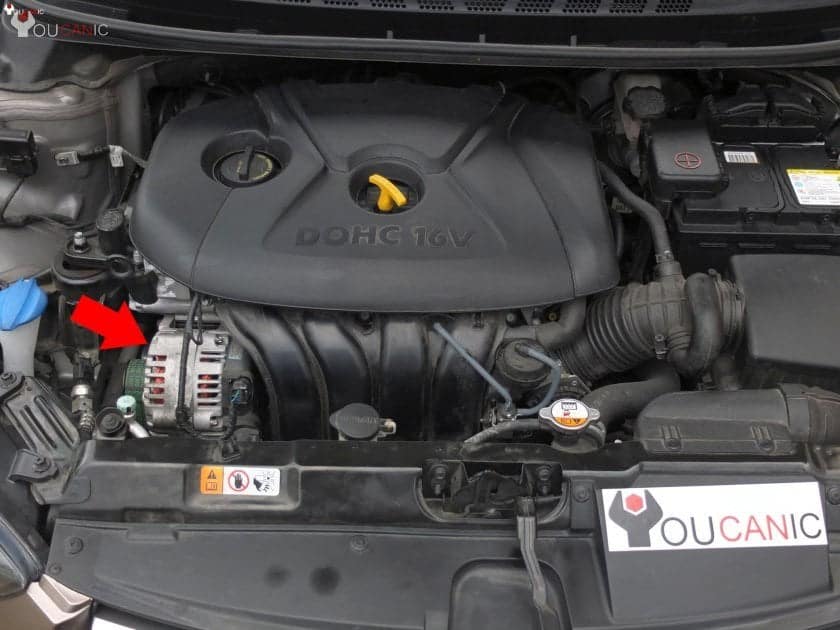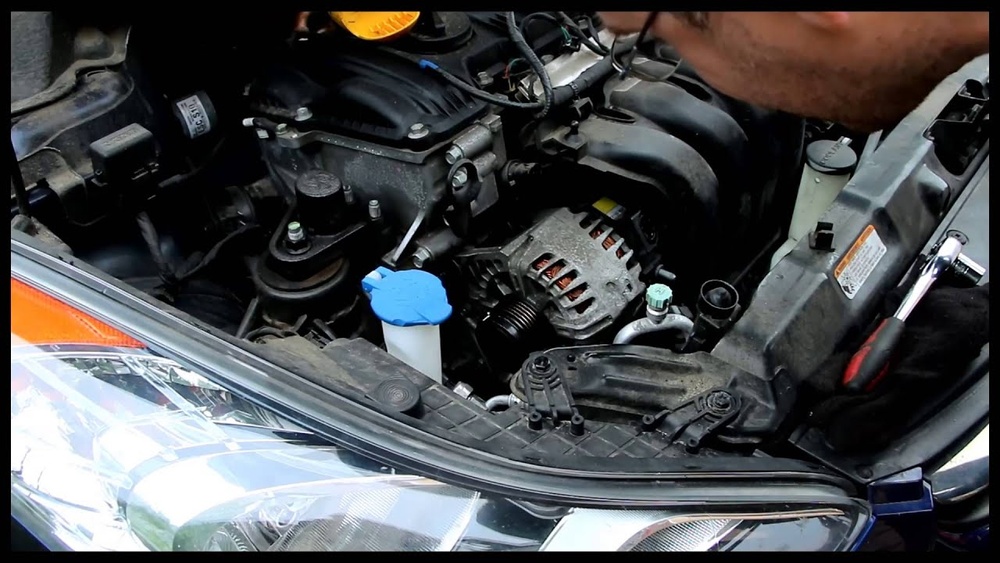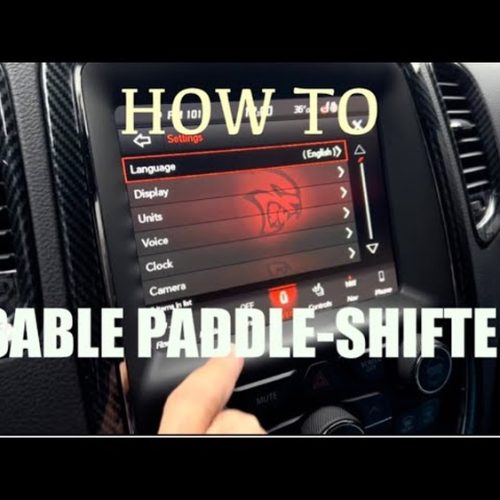Is your 2013 Hyundai Elantra showing signs of a failing alternator? Maybe your battery keeps dying, or your headlights are dimming unexpectedly.
Replacing the alternator might sound complicated, but with the right steps, you can do it yourself and save time and money. In this guide, you’ll discover clear, simple instructions to replace your alternator quickly and safely. Keep reading, and by the end, you’ll have the confidence to get your Elantra’s electrical system back on track.
Signs Of A Bad Alternator
Knowing the signs of a bad alternator helps keep your 2013 Hyundai Elantra running smoothly. The alternator charges the car battery and powers electrical parts. If it fails, your car may stop working properly. Early signs let you fix the problem before it gets worse. Watch for changes in your car’s lights, warning signals, and sounds. These clues tell you if the alternator needs replacement.
Dimming Lights And Electrical Issues
One common sign is dimming headlights or dashboard lights. The alternator may not supply enough power. You might also notice slow power windows or weak radio sound. Electrical parts work poorly because of low voltage. These issues show the alternator is struggling to keep up.
Battery Warning Light
The battery light on your dashboard can turn on. It does not always mean the battery is bad. Often, it shows the alternator is failing. The light signals the car’s charging system has a problem. Don’t ignore this warning. Check the alternator to avoid breakdowns.
Strange Noises
Listen for unusual sounds from the engine area. A bad alternator can make grinding or whining noises. These sounds come from worn bearings or loose parts inside. Strange noises mean the alternator is damaged. Have a mechanic inspect it soon to prevent further damage.
Tools And Materials Needed
Replacing the alternator on a 2013 Hyundai Elantra requires specific tools and materials. Having the right items ready makes the job easier and faster. This section covers all the essentials you need before starting the repair.
Basic Hand Tools
Start with a socket set that includes 10mm and 14mm sockets. A ratchet wrench helps remove bolts quickly. A wrench set with open and box ends is useful for tight spaces. Screwdrivers, both flathead and Phillips, assist with clamps and connectors. A pry bar can help loosen stubborn parts. Having a torque wrench ensures bolts are tightened correctly.
Replacement Alternator
Buy a replacement alternator made for the 2013 Hyundai Elantra. Check that it matches the original part number. Quality matters for long-lasting performance. Choose a new or remanufactured alternator with good reviews. Ensure it comes with necessary mounting hardware and connectors. Double-check voltage and amperage ratings to fit your vehicle.
Safety Gear
Wear safety glasses to protect your eyes from debris. Use gloves to avoid cuts and burns. Have a pair of closed-toe shoes for foot protection. Disconnect the car battery before starting to prevent electric shock. Work in a well-lit area to see clearly. Keep a fire extinguisher nearby as a precaution.
Preparing The Vehicle
Preparing your 2013 Hyundai Elantra for an alternator replacement is an important first step. It ensures safety and makes the job easier. Take time to get everything ready before you start working on the car.
Disconnecting The Battery
Start by opening the hood and locating the battery. Use a wrench to loosen the negative terminal first. Remove the cable and keep it away from the battery. This stops any electrical flow and prevents shocks. Then, do the same with the positive terminal. Never touch both terminals at once.
Securing The Car
Make sure the car is parked on a flat surface. Engage the parking brake firmly. Place wheel chocks behind the rear tires to stop movement. This keeps the car safe while you work underneath. Double-check that the car won’t roll or shift during the repair.
Removing The Old Alternator
Removing the old alternator from a 2013 Hyundai Elantra is a key step in the replacement process. This task requires care and attention to detail. The alternator is connected to the engine by a belt and several electrical connections. These must be removed carefully to avoid damage. Follow these steps to take out the old alternator safely.
Loosening The Belt
Start by loosening the serpentine belt that runs over the alternator pulley. Use a wrench or a belt tensioner tool to release the tension. Slide the belt off the alternator pulley slowly. Keep the belt away from any sharp edges or hot parts. This step frees the alternator from the engine’s belt system.
Disconnecting Electrical Connections
Next, disconnect the electrical wires attached to the alternator. Begin with the main power cable secured by a nut. Remove the nut and pull the cable off gently. Then, unplug the smaller connector that links to the alternator’s control circuit. Handle the wires with care to avoid breaking the connectors.
Unbolting The Alternator
Finally, remove the bolts holding the alternator to the engine block. Use a ratchet or socket wrench to take out these bolts. Keep them safe for later use. Once the bolts are removed, lift the alternator out of the engine bay carefully. The old alternator is now ready for replacement.
Installing The New Alternator
Installing the new alternator on your 2013 Hyundai Elantra is a key step. It requires careful attention to ensure everything fits and works correctly. Follow the steps below to place the alternator properly and prepare it for use.
Positioning And Bolting The Alternator
Start by placing the new alternator in its mounting spot. Align it with the bolt holes carefully. Insert the bolts by hand first to avoid cross-threading. Tighten the bolts securely using a wrench. This keeps the alternator stable and prevents movement during engine operation.
Reconnecting Electrical Wires
Next, reconnect the electrical wires to the alternator terminals. Attach the main power cable tightly to the battery post on the alternator. Connect the smaller plug to its socket, ensuring a snug fit. Proper connections help the alternator charge the battery efficiently.
Adjusting The Belt Tension
Check the belt that drives the alternator pulley. Adjust the tension by moving the alternator slightly away from the engine. The belt should be tight but not too stiff. A loose belt can slip, and a tight belt may cause damage. Use a belt tension gauge if available for accuracy.

Credit: www.youcanic.com
Testing The New Alternator
Testing the new alternator is a crucial step after installation. It confirms the part works correctly and your car’s electrical system is charging properly. Follow these simple steps to ensure the new alternator performs well.
Reconnecting The Battery
Start by reconnecting the car battery. Attach the positive cable first, then the negative cable. Make sure the connections are tight to avoid any loose contact. This step restores power to your vehicle’s electrical system.
Starting The Engine
Turn the key to start the engine. Listen for any unusual sounds from the engine bay. The engine should run smoothly without stalling. If it struggles to start, check the battery connections again.
Checking Voltage Output
Use a multimeter to check the alternator’s voltage output. Place the meter’s probes on the battery terminals. A healthy alternator should read between 13.5 and 14.5 volts while the engine runs. Readings outside this range may indicate a problem.
Tips For Maintenance
Keeping your 2013 Hyundai Elantra’s alternator in good shape extends its life. Simple maintenance tips can stop many problems early. These tips help your car run smoothly and avoid breakdowns. Follow these easy steps to care for your alternator and battery.
Regular Inspection
Check the alternator belt for cracks or wear. A loose or damaged belt lowers charging power. Look for dirt or oil on the alternator. Clean it gently to prevent damage. Listen for strange noises from the alternator. Strange sounds can mean a failing part. Inspect the wiring and connections. Loose wires cause poor electrical flow and errors.
Battery Care
Keep the battery terminals clean and tight. Corrosion on terminals blocks power flow. Use a wire brush to clean terminals if needed. Test the battery voltage regularly. A weak battery stresses the alternator. Replace the battery if it cannot hold charge. Good battery health means less work for the alternator.
Professional Checkups
Have a mechanic check the alternator during routine services. Professionals spot hidden issues early. They can test output power and belt tension. A yearly check helps avoid sudden alternator failure. Trust experts for repairs beyond basic care. Regular professional checks keep your car reliable.

Credit: www.youtube.com

Credit: www.amazon.com
Frequently Asked Questions
How Do I Know If My Alternator Is Failing On A 2013 Hyundai Elantra?
Signs include dim headlights, battery warning light, and electrical issues. The car may stall or have trouble starting. These symptoms suggest alternator problems needing inspection or replacement.
What Tools Are Needed To Replace The Alternator On A 2013 Hyundai Elantra?
You will need a socket set, wrench, screwdrivers, and a serpentine belt tool. Safety gloves and eye protection are also recommended during the replacement process.
How Long Does It Take To Replace An Alternator On A 2013 Hyundai Elantra?
Replacing the alternator typically takes 1 to 2 hours. This depends on your experience and tool availability. Following a proper guide can speed up the process.
Can I Replace The Alternator Myself On A 2013 Hyundai Elantra?
Yes, if you have basic mechanical skills and the right tools. Follow step-by-step instructions carefully to avoid damage. Otherwise, consult a professional mechanic.
Conclusion
Replacing the alternator on your 2013 Hyundai Elantra is doable with patience. Follow each step carefully to avoid mistakes. Double-check all connections before finishing the job. A working alternator keeps your car’s battery charged and electronics running. Take your time and work safely to get the best results.
This guide helps you save money and learn a useful skill. Keep your car in good shape by doing simple repairs like this. You can do it!






